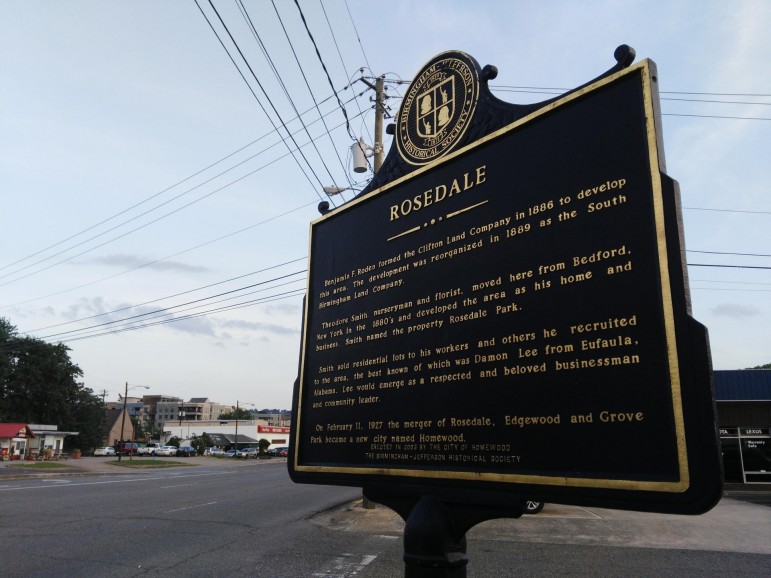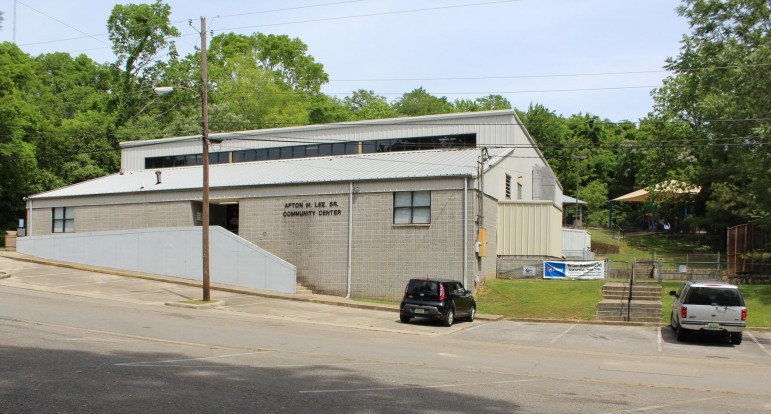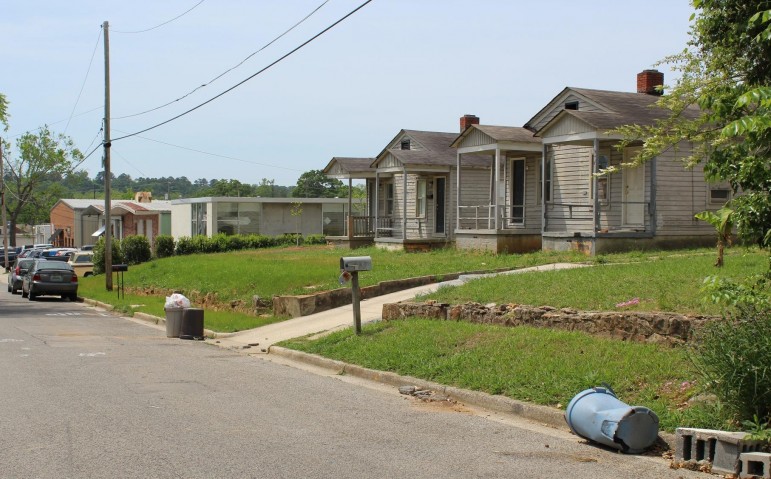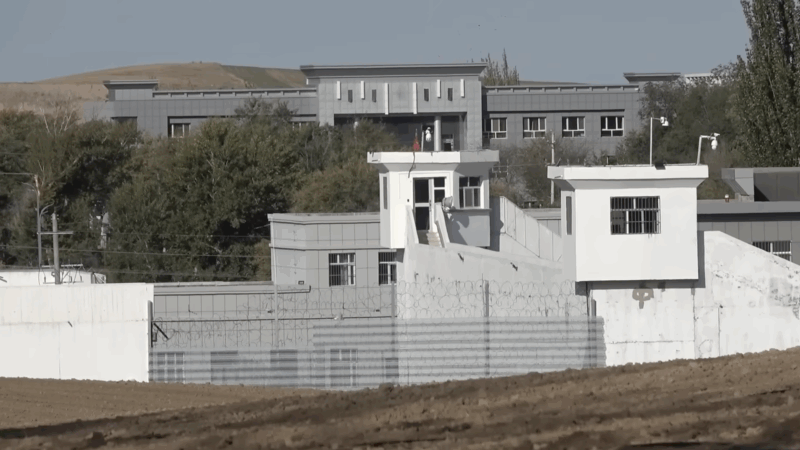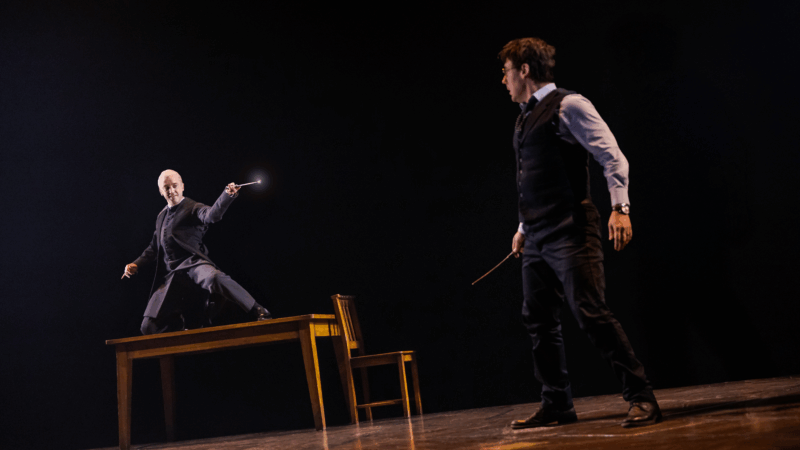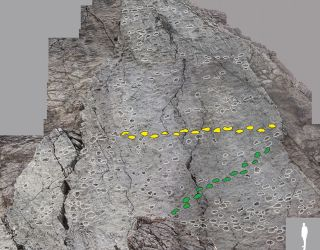Birmingham Revitalization: Struggling to Keep Homewood’s Rosedale Neighborhood
Walking through the streets of Homewood’s Rosedale neighborhood, lifelong resident Mary Edwards says things used to look very different.
“Can you see that cross up there, that building by the cross over there? Can you see it?” she asks. “That’s Bethel Church. All over there, houses used to be there.” Edwards points across 18th Street. The road roughly divides what’s left of Rosedale from Homewood’s sprawling downtown.
The neighborhood of Rosedale is easy to miss, quietly tucked at the base of Red Mountain on the edge of Homewood. For years, residents of the community have been fighting to keep its historic character, but the city is expanding and there is a constant threat of commercial development.
Mary Edwards says Rosedale used to be vibrant and full of life. Now she calls it a ghost town. Lots are vacant and the streets are in disrepair. She says as Homewood has grown, it has ignored the needs of Rosedale. “Businesses wanted to come in and take Rosedale over, which some of them have done that,” says Edwards. “Because a lot of places where businesses are now – those was houses.”
Decades-Long Battle
According to UAB assistant professor of history Pamela King, residents of Rosedale have faced pressure since the 1950s from outsiders who have wanted to tear down their modest houses. “And this was a real David and Goliath story because developers always eyed Rosedale, because they didn’t think that working class neighborhood was at its highest and best use,” says King. “In other words, they could put a shopping center there or some fancy houses and make a lot more money.”
Some developers were successful. Today only a small portion of the neighborhood remains. About 10 years ago, King helped list Rosedale on the National Register of Historic Places. The community was the first suburb outside of Birmingham settled by African-Americans in the late 1800s. Much of the land was owned by the Lee family, whose name is still visible in the area. It became part of Homewood in 1927.
Call to Preserve and Revitalize
King says it is important to preserve that history by protecting what is left of Rosedale. But the Homewood City Council has not approved a preservation ordinance, so there are no guidelines for development in the city’s historic districts. Residents say that without these protections, their neighborhood has been picked apart and the property that remains needs revitalization.
In 2002, community members presented a “Rosedale Urban Renewal Plan” to the Homewood City Council. Thomas Hamner helped draft the proposal. “This is what we wanted to do,” he says. “Just improve the neighborhood, streets and curbs and do the whole thing, you know?” Hamner says the city council did not approve the plan, and over a decade later, Rosedale still needs basic improvements. Sidewalks and gutters need to be repaired, streets repaved, and building codes addressed.
Promising More
Michael Hallman, who represents Rosedale on the Homewood City Council, says residents of the community have lost faith in city leadership and it is easy to see why. “The citizens of Rosedale have come to the council before and said, ‘We don’t want this, we don’t like this, can we work something out?’” he says. “The council has said, ‘No, this is what’s best for the city, therefore that’s what’s best for Rosedale.’”
Moving forward, Hallman says the council is planning to devote more resources to Rosedale. “The City Council’s looking at road improvements,” he says. “We’re looking at getting rid of some of the houses that are run down. We’ve put some of them before the abatement board.”
Ready for Action
Residents hope to see it happen. Ann Dunlap lives in a YWCA rental house for senior citizens in Rosedale. She says one idea is to replace run-down properties with newer, affordable places to live. “I would like to see more low-income housing available, you know, because it is such a prime commodity here in Homewood,” says Dunlap.
Mary Edwards agrees. She says she would love to see Rosedale overcome its struggles. “If the dead know what the living has done, they would be crying in their grave to see how Rosedale has really gone down,” says Edwards. “I would like to see it come back up again. Like you plant a flower and how it sprouts up. That’s how I would like to see Rosedale again.”
Outside of Homewood, Birmingham is experiencing its own development boom. The story of Rosedale may be a cautionary one. Neighborhoods should be prepared that progress may come with a cost.
Federal court says troops can stay in D.C., and hints at prolonged deployment
A federal appeals court in Washington, D.C. has ruled that National Guard troops can remain in the city for now. That decision comes after a different federal appeals court ruled that troops must leave Los Angeles earlier this week.
Jack Smith defends his prosecutions of Trump in closed-door session in Congress
The former Justice Department special counsel told the House Judiciary Committee that his team developed "proof beyond a reasonable doubt" that Trump took part in a criminal scheme to overturn the 2020 election.
A Chinese man who filmed secret footage in Xinjiang risks deportation from the U.S.
Guan Heng sailed to the U.S. by boat from the Bahamas after publishing footage he filmed of purported detention camps in China. He has been held in immigration detention since August.
‘Harry Potter’ fans are flying to Broadway to see the original Draco Malfoy
Almost eight years after Harry Potter and the Cursed Child opened on Broadway, Tom Felton, who played Draco Malfoy in the films, is now playing him as an adult onstage.
A photographer discovers miles of dinosaur tracks near Italy’s Winter Olympic venues
A nature photographer stumbled upon thousands of 210-million-year-old dinosaur tracks in Italy's central Alps, near where some Olympic skiing and snowboarding events will be held in February.
Senate passes $901 billion defense bill that pushes Hegseth for boat strike video
The Senate has given final passage to the annual National Defense Authorization Act, which raises troop pay by 3.8%. It also pressures Defense Secretary Pete Hegseth to provide lawmakers with video of strikes on alleged drug boats near Venezuela.

